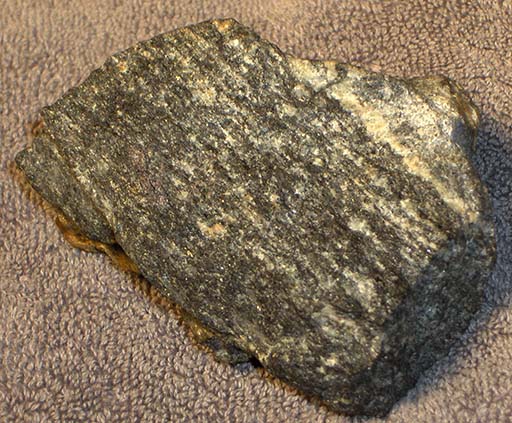2.4 The age of the Sun
Finally, the Sun is old. It is reasonable to assume that the Earth and Sun formed at more or less the same time, or at the very least that the Earth cannot be older than the star that it is orbiting. If we can determine the age of the Earth, then it follows that the Sun cannot be younger than this. As a consequence geologists have spent much effort trying to find the oldest bits of the Earth. Currently the record holders are rocks from the north-west of Canada (a sample of which is shown in Figure 5), which appears to be over four billion years old (four thousand million years). In actual fact astronomers and geologists have determined that the Sun is slightly older than this, at 4.6 billion years, after studying meteorites known to have formed at the same time as the Sun and the solar system.

